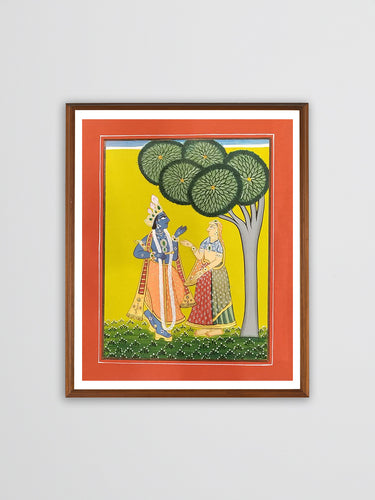Basholi painting is the earliest Pahari school of miniature art form that originated in the Basohli region of Jammu and Kashmir. It is mainly known for its vibrant colors, intricate details, and rich historical significance. The distinctive features of the Basohli miniature include elongated figures, stylized facial features, and intricate ornamentation. The lively compositions like figures depicted in graceful poses against lush landscapes or architectural backdrops are common occurrences in this genre of painting. The synthesis of mythology and love gave an unconventional dimension to Basohli school of miniature painting. The most popular subjects were inspired by Vaishnavite themes such as Ramayana, Mahabharat, Rasmanjari series, etc.
History and Legend
Basohli miniature flourished around the 17th century under the patronage of the ruling Rajput kings of the region, mainly under Sangram Pal (1635-1673) and later Kirpal Pal (1678-1693). Legend has it that the Basohli school of painting was mostly inspired by the divine love story of Lord Krishna and Radha, which was popularized by the Vaishnavite tradition. These paintings served not only as artistic expressions but also as devotional offerings to the gods.
Details
Basohli miniature paintings are known for their meticulous attention to detail, especially in portraying human figures, and architecture with the evident influence from Mughal and Rajput miniatures. The artists often used natural pigments derived from minerals, plants, and even precious stones to create the vivid colors seen in the paintings. The most distinctive feature of these paintings is the portrayal of their jewelry. Materials like embossed white paint were used for pearls and the wing-case of beetles for emerald green.
Show Less

